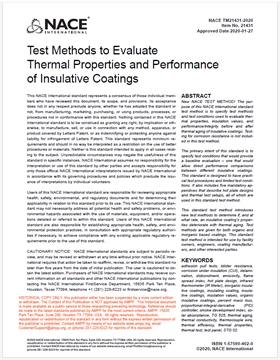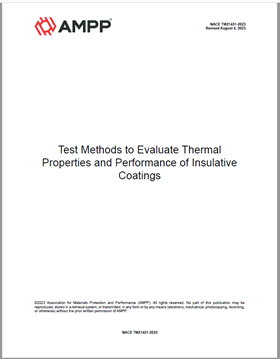Search
Products tagged with 'corrosion under insulation (cui)'
View as
Sort by
Display
per page
Acceptance Testing for Coatings in Insulated Service
Product Number:
51217-057-SG
Publication Date:
2017
$20.00
An Insight to the RBI of Corrosion under Insulation (CUI) and Corrosion under Fireproofing (CUF)
Product Number:
51324-21057-SG
Publication Date:
2024
$40.00
Can One Coatings be Best for All CUI Service
Product Number:
41216-987-SG
Publication Date:
2016
$20.00
Comprehensive Corrosion under Insulation (CUI) Management for Cryogenic Service: A Facility-Specific Approach with Broad Industry Implications
Product Number:
51324-21071-SG
Publication Date:
2024
$40.00
Corrosion Under Insulation (CUI) Management – A Case History
Product Number:
51219-196-SG
Publication Date:
2019
$20.00
Down-the-Hole Withhout a Paddle: Corrosion Mitigation of Wellhead Surface Casings Using IMM Coatings
Product Number:
51220-241-SG
Publication Date:
2020
$20.00
NACE TM21431-2020, Test Methods to Evaluate Thermal Properties and Performance of Insulative Coatings
Product Number:
21431-2020
Publication Date:
2020
$179.00
NACE TM21431-2023, Test Methods to Evaluate Thermal Properties and Performance of Insulative Coatings
Product Number:
NACE TM21431-2023
Publication Date:
2023
$109.00
Pulsed Eddy Current Advanced Data Analysis – Unlocking new possibilities for vessels inspection
Product Number:
51321-16466-SG
Publication Date:
2021
$20.00
Selection of Coating Systems for CUI Service
Product Number:
41213-769-SG
Publication Date:
2013
$20.00
Step Change Epoxy Coatings for Pipes, Tanks, Vessels and Railcars
Product Number:
51218-104-SG
Publication Date:
2018
$20.00
- 1
- 2












